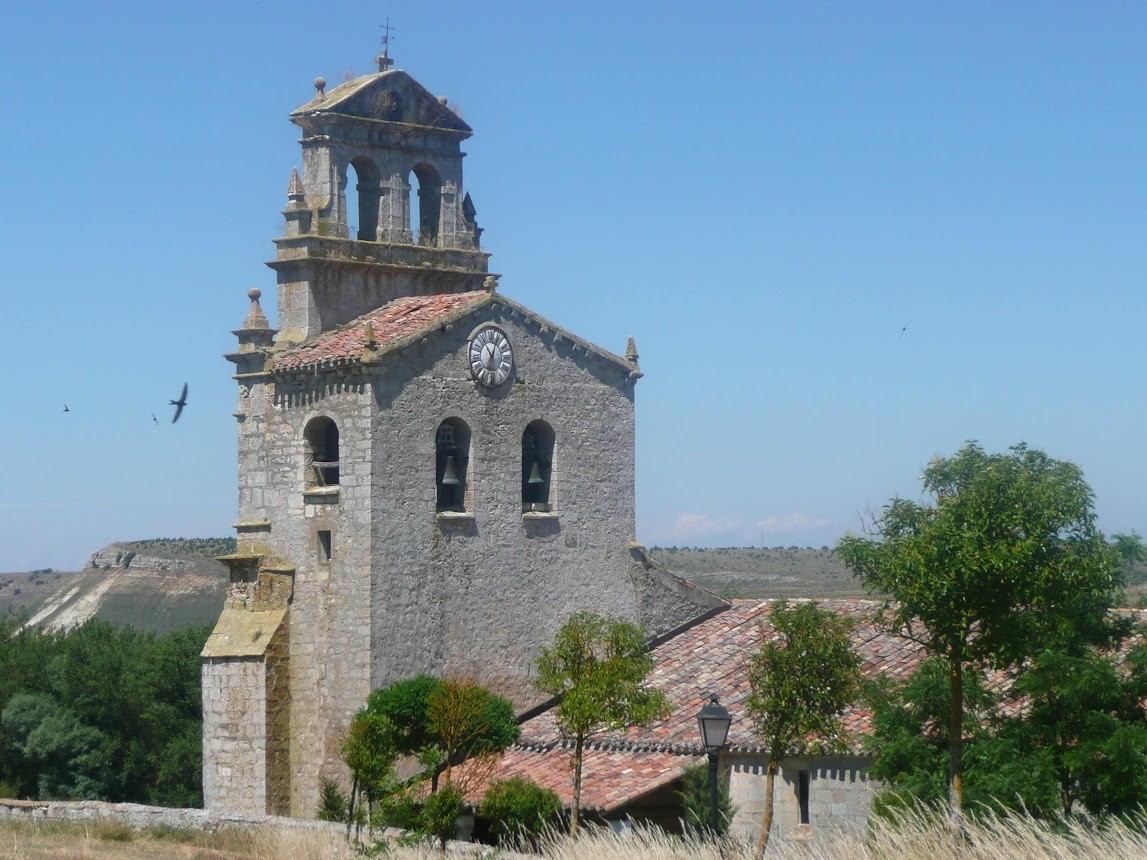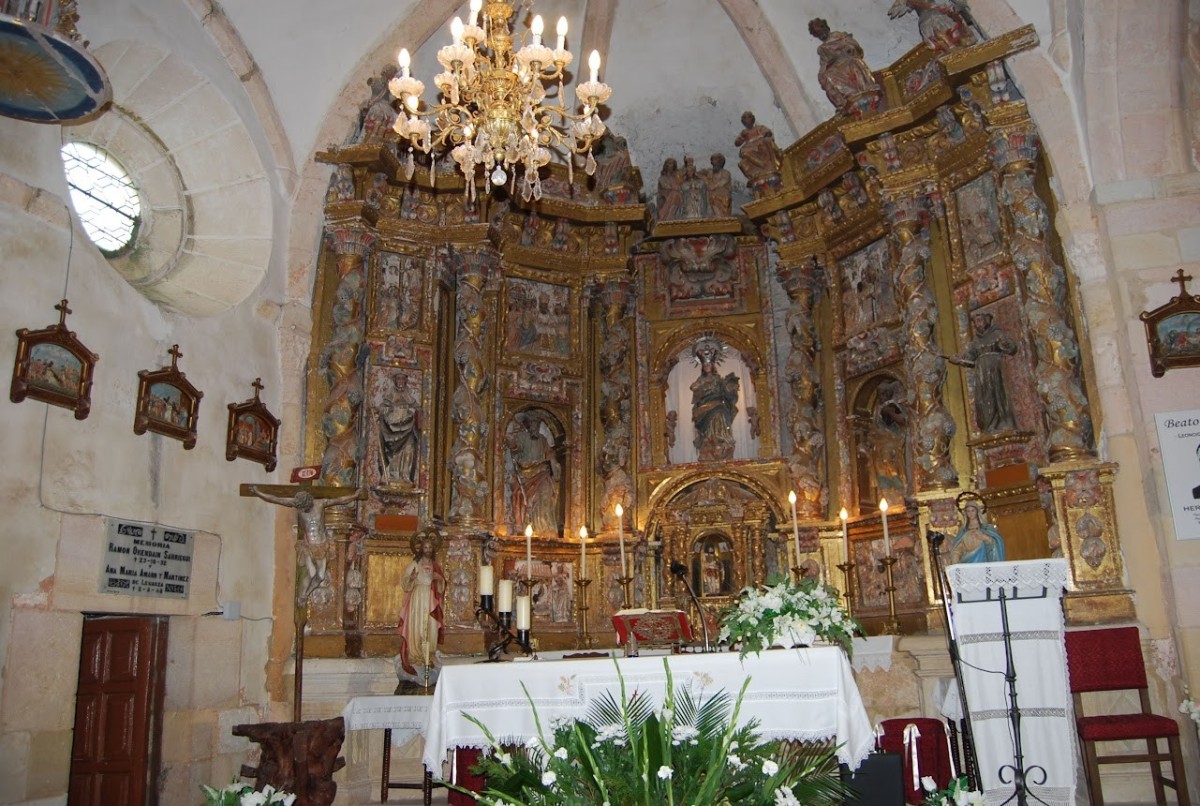
It could very well be the plot of a blockbuster film: an almost deserted village sees how, due to neglect and the passing of time, one of its historic and most emblematic buildings is deteriorating without anyone doing anything about it. Concerned that if this continues, one of its landmarks will disappear forever, a group of determined neighbours decide to take matters into their own hands.
This is the story of Masa, a Burgos village, where its few but tireless inhabitants have set to work to raise the necessary funds. They aim to restore the altarpiece and the clock of the Church of Nuestra Señora de la Asunción before they deteriorate beyond repair.

Saving the heritage of a village in abandoned Spain
"We are the best example of abandoned Spain", said Josechu de Miguel, president of the RE&RE Páramo de Masa association, in a telephone conversation. He, however, admits that he is not convinced by this now-in-vogue expression, which he attributes to the sensationalism of politicians and the media.
"We live well here, it's peaceful, and we have a good quality of life," he claimed, "but some services are indeed lacking, especially communication services, such as fibre optics". This reality is reflected by only 27 residents being on the census, of whom no more than eight live there all year round. They may be few but thanks to this objective, "they are more united than ever". And there is nothing like a community challenge to bring neighbours together.
The people of Masa are no strangers to defending their heritage. However, it is the first time they have taken clear and decisive measures to achieve their goals. They started by creating an association specifically to work along these lines: RE&RE Páramo de Masa association. They also knocked on as many doors as possible, contacting public administrations and private companies to get them involved (with an unequal response, it must be said). They also got in touch with the Bishopric of Burgos, who, as the church's owner, had no problems authorising the necessary restoration work.
But what's creating the most noise is their crowdfunding campaign, a practice of micro-sponsorship through the internet, in collaboration with the association Hispania Nostra. Anyone can participate using this method by donating as little as €10 on this website.
At the start of writing this article, donations were at €25,522 and rose to €25,892, thanks to 179 contributors from around the world, with some of those contributions coming from as far away as Canada. So far, they have raised 47% of the project's total cost, valued at €55,000, although they recognise that work could start at €40,000.
Although this has yet been raised, there is no doubt that a very significant figure has been reached, which gives cause for optimism. This is particularly true if we consider that the crowdfunding will end on 25 July and that Burgos Provincial Council has promised the association an additional €10,000.
A village's history and identity at stake
The church was built in two phases. "It is believed to date back to the 13th or 14th century, but no date is certain," explained de Miguel. "However, we do know that an extension was built in 1655." The altarpiece was created in 1684 by the master sculptor José Rodríguez in the pre-Churrigueresque Baroque style. It consists of a bench, a body organised into five sections, crowned with six Solomonic columns. In the central aisle, niches house the tabernacle, representations of St Peter, St Paul, St Dominic, St Francis, the archangels at the ends and the evangelists at the top, with biblical scenes.
The mechanised clock, however, is much more recent, from the early 20th century. The mechanism's poor state of conservation means that it cannot be restored with any guarantees, so the alternative is to replace it with an electronic clock. However, "the original dial will be restored and maintained, consisting of a wooden support that holds the twelve kiln-enamelled, embossed copper plates on which the Roman numerals are inscribed, and a central disc housing the hands," explained the association's chair.
Beyond the unquestionable historical value, there is a sentimental value for Masa's residents. "This church has touched every stage of our lives: baptisms, confirmations, marriages, and we've even said farewell to our loved ones here." And, of course, they cannot forget the clock and bells' significance to those who worked in the fields, marking the hours and the key moments of the day, "such as the Angelus", a midday prayer.
Sponsor a work of art or have a charity vermouth
The crowdfunding campaign appears to be the association's most successful initiative. For those who want to do their bit, there are several donation options, starting at €10. Depending on the donation, each donor will receive a gift ranging from a thank you card to key rings, coasters or a guided tour of the village.
Another option is to sponsor one of the church's many artistic elements, starting at a reasonable amount of €150. You can sponsor the church pews, the choir, the tenebrarium, the weather vane, the cloak or an image of the Virgin of Fatima.
These contributions, de Miguel reminds us, are eligible for deductions of up to 80% of income tax or 40% of corporate tax. For example, if an individual contributes €150, the tax deduction would be €120, which in practice would cost the donor €30.
You can also collaborate by attending the street market organised by the association on 12 and 13 August or by participating in the auction and the charity vermouth on 15 August, coinciding with the feast of Our Lady of the Assumption, the town's patron saint.
Just like in the movies, we hope that the people of this small village in the province of Burgos will get their happy ending. There is no doubt that their perseverance and determination deserve it.
